12 Safe Yoga Poses That Make Bones Stronger After 50
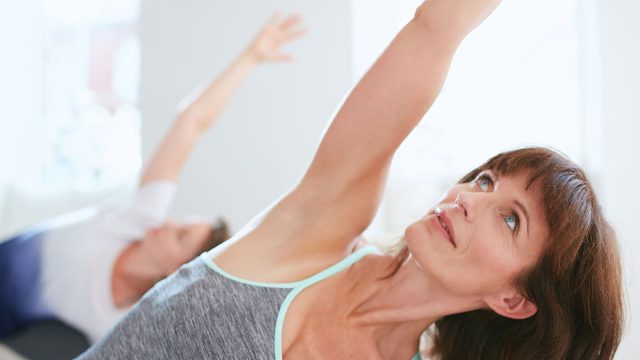
Want stronger bones without risking injury? Kendra Fitzgerald, a certified yoga teacher and exercise specialist, knows some yoga poses that can help and guide you through each move safely. Read on to learn how to modify traditional poses to protect your spine while building strength. Whether you're new to yoga or worried about osteoporosis, this step-by-step guide shows you how to adapt each pose for your body. Follow along as Kendra shares expert tips to improve your balance, build bone density, and move with confidence.
The Science Behind Yoga for Bone Health
A 10-year study by Dr. Loren Fishman demonstrated that regular yoga practice can safely increase bone mineral density (BMD) in both the spine and femur. BMD measures the concentration of calcium and other minerals in bones, which is a key indicator of bone strength. This research proves that yoga can help maintain and improve bone health.
Understanding the Benefits
According to Harvard Health, "Yoga can improve posture and strengthen the muscles that support the spine." Beyond bone density, Osteoporosis Canada notes that "Yoga can help to build strength, improve flexibility and enhance balance – all of which are important for bone health and fracture prevention."
Safety First: Preparing for Practice
Before beginning, ensure you have a yoga block and strap nearby. These props help maintain proper alignment and make poses accessible for all levels. As noted in Dr. Fishman's research, yoga has "side effects" that include "reduced levels of anxiety," making it a holistic approach to bone health.
Tree Pose: Finding Balance and Building Core Strength
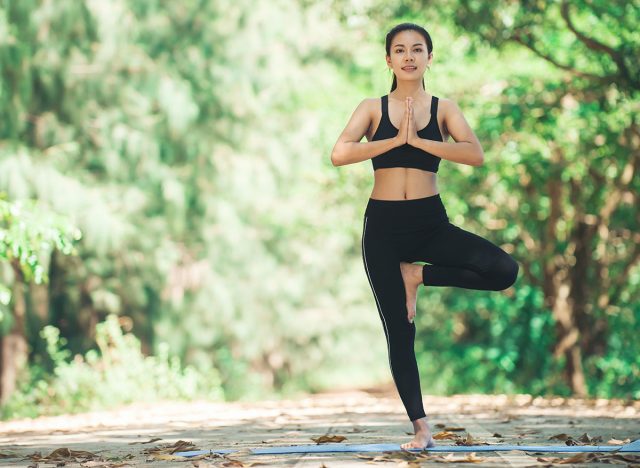
Dr. Fitzgerald begins her post with a tree pose to establish balance and core engagement. "Press your foot down into the floor from the heel to the ball of the foot," she instructs. "Imagine you had a string attached to the top of your head pulling you toward the ceiling." This pose strengthens hip stability while improving balance—which is crucial for preventing falls.
Triangle Pose: Creating Length and Stability

"Ground down through your heels and let that reverberate up to your hips through your tailbone," explains Dr. Fitzgerald. The pose focuses on lengthening the spine while maintaining stability. Using a block provides additional support and ensures proper alignment.
Warrior II: Building Lower Body Strength
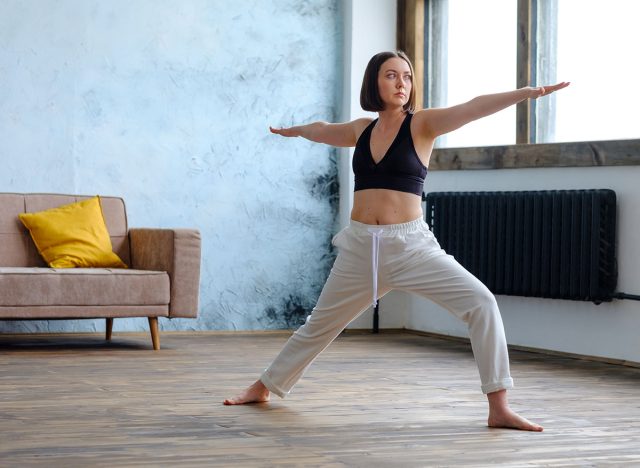
This powerful stance strengthens the legs while opening the hips. Dr. Fishman emphasizes proper alignment: "Let your ribs align over your pelvis and extend your arms out to either side." The pose builds strength in the legs and core while improving balance.
Side Angle: Extending the Spine
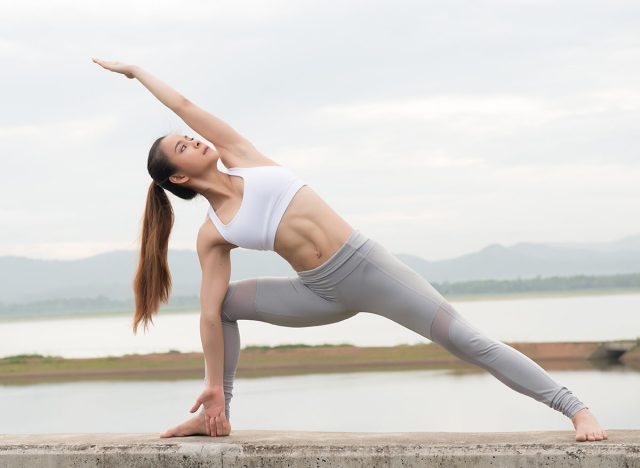
Dr. Fitzgerald guides practitioners to "fire up your glutes, arrange your hips so you feel freedom in the core." This pose creates length in the side body while strengthening the legs and core.
RELATED: 40+ Mom Loses 70 Pounds in a Year With These 4 Simple Steps
Understanding Safe Spinal Rotation
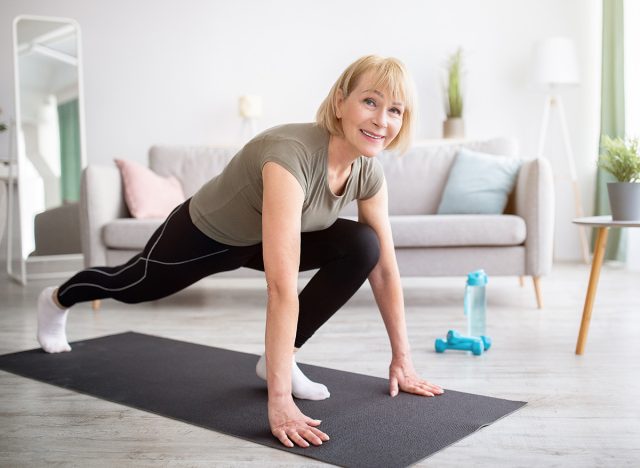
Harvard Health emphasizes that "Yoga can also improve balance and coordination, which can help prevent falls." This principle is especially important in twisting poses, where proper technique is crucial.
Twisted Triangle: Safe Spinal Rotation
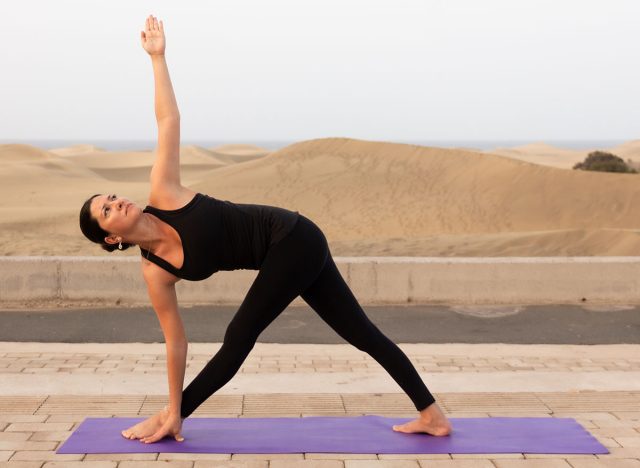
"The key to twisting with osteoporosis is keeping your spine straight while you twist," Dr. Fitzgerald says. "We have to rotate from our hips and use our core muscles to help rotate, not the flexibility of our spine."
Locust: Strengthening the Back

This gentle backbend strengthens the entire posterior chain. Dr. Fitzgerald instructs to "use your glute muscles to help lift your legs" while keeping the chin tucked to protect the cervical spine.
Bridge: Engaging the Posterior Chain
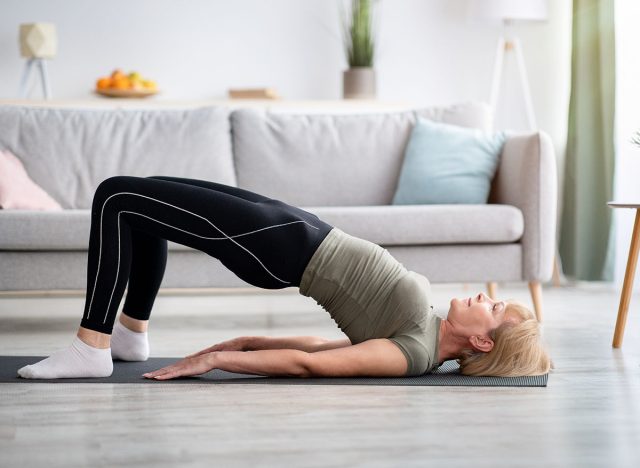
"You should not feel this in your lower back," Dr. Fitzgerald cautions. Instead, focus on using the glutes and hamstrings to lift while keeping the core engaged.
RELATED: 5 Quick Fat-Burning Tricks This Natural Bodybuilder Swears By
Supine Leg Stretch: Creating Length Safely
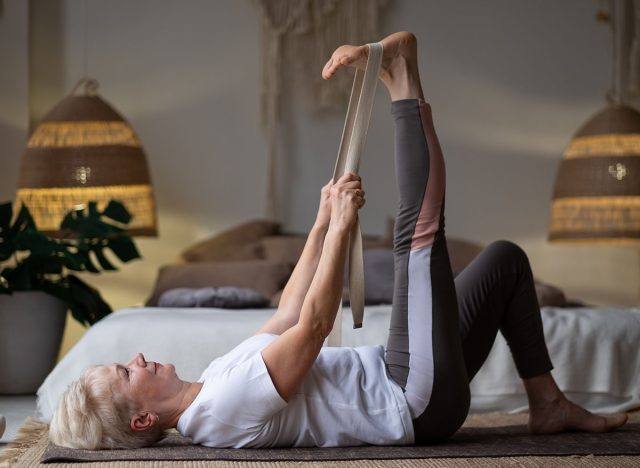
Using a strap, this pose safely stretches the hamstrings while maintaining spinal alignment. Dr. Fitzgerald emphasizes keeping shoulders relaxed and breathing into any sensations.
Seated Straight Leg Twist: Core Rotation
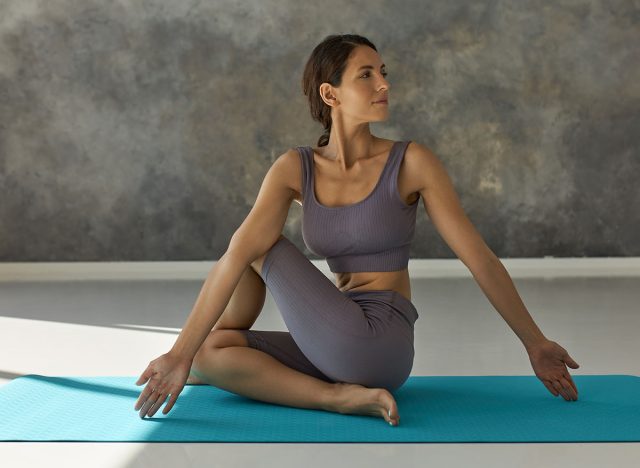
"Stay upright and lifted to stay safe in your osteoporosis twists," says Dr. Fitzgerald. The focus is on rotating from the upper back while maintaining a straight spine.
Bent Knee Twist: Gentle Spinal Mobility
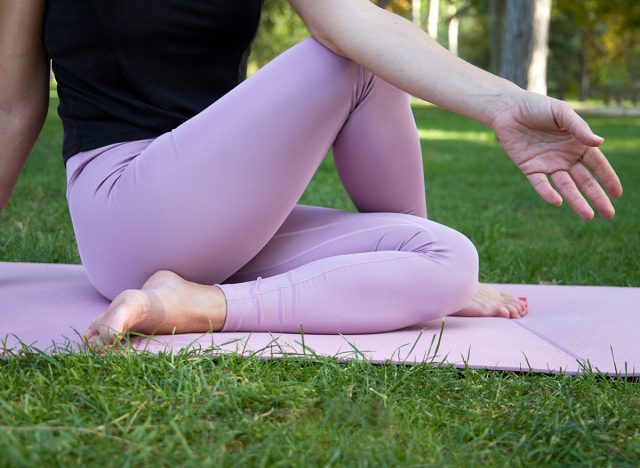
This variation provides a gentler twist while maintaining spinal integrity. Dr. Fitzgerald emphasizes using "deep core muscles to help rotate and twist through your upper back."
Modified Poses: Adapting for Your Body
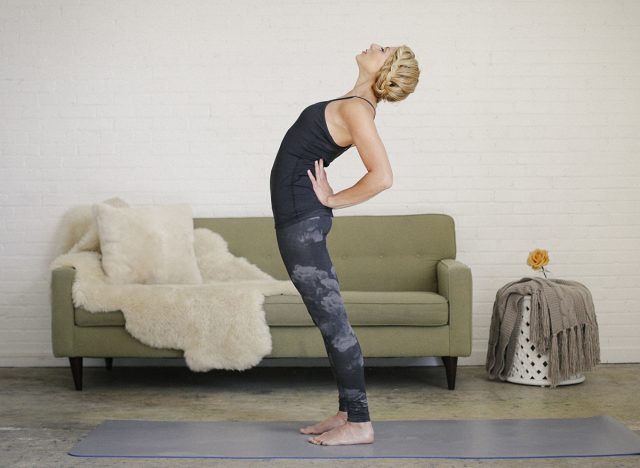
Throughout the sequence, Dr. Fitzgerald offers modifications to make poses accessible for different ability levels. Use blocks, straps, and variations to maintain proper alignment and safety.
Shavasana: Integration and Rest
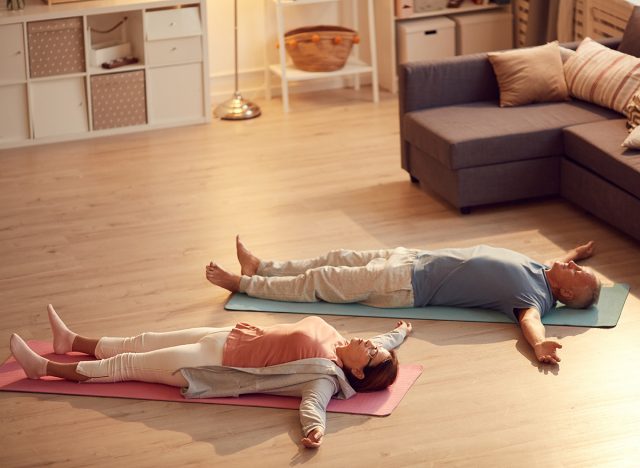
The practice concludes with relaxation, allowing the body to integrate the work. "Let the parts of your body that are touching the floor fully relax and release," guides Dr. Fitzgerald.
RELATED: Woman Drops 3 Dress Sizes in Her 40s By Eating These 10 High Protein Meals
Long-Term Benefits of Regular Practice

Research shows that consistent yoga practice can lead to improved bone mineral density, better balance, and reduced anxiety. As noted in Dr. Fishman's study, these benefits accumulate over time, making yoga a sustainable approach to bone health. And if you enjoyed this article, take advantage of these 20 Superfoods for People Over 50.




